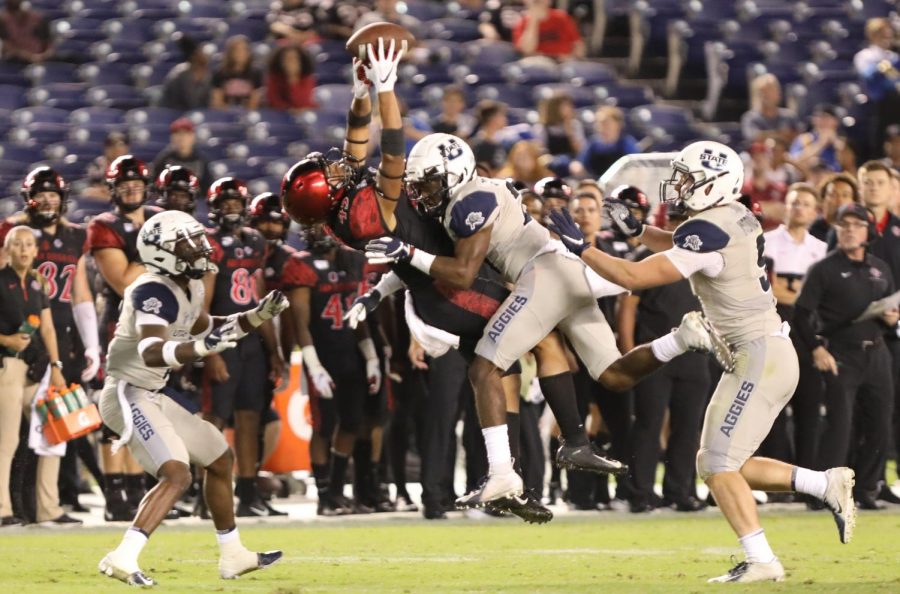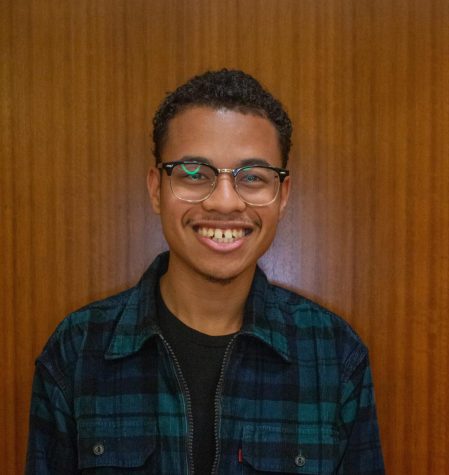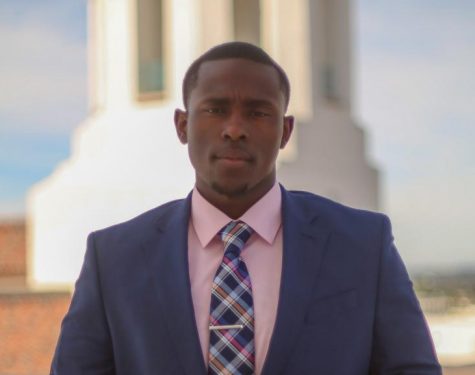When the COVID-19 pandemic struck the U.S. earlier this year, many sports including college athletics were either postponed or canceled altogether.
As the virus continued to sweep the country in the following months, people began to question if it was even possible for fall sports to return— let alone with thousands of fans in the stands.
The California Department of Public Health put out a set of guidelines on Aug. 7 for universities to follow in order to begin preseason workouts and conduct regular-season games.
One of the notable takeaways from the guidelines is found on page 25.
The only way for teams to begin competitive play was to have it without spectators. The recommendations are considered to be interim since it is based on ongoing data that could change within the coming weeks and months.
SDSU Athletics followed up with a release announcing no fans would be allowed at SDCCU Stadium this upcoming season because of the new guidelines set by the state.
People have reacted differently to this, but all must understand this one point: the decision to not have fans was done to protect the health and safety of student-athletes and coaches from the virus.
Planning the operation of any sport during a pandemic is no easy task. Many colleges across the country proposed ideas to bring fans back to games in some capacity with social distancing, masks and other COVID-19 protocols in mind.
SDSU studied several ideas to bring fans to games this season with social distancing specifically for football at SDCCU Stadium since it seats over 70,000 people.
Unfortunately, that idea is now an afterthought.
For many, it is disappointing to not be sitting at SDCCU Stadium to begin another season of SDSU football on Sept. 26. The inability to enjoy the atmosphere of college football leaves an empty feeling.
However, it is important to understand why these rules had to be set in place. The risk of catching this virus is just too high.
Many colleges have shut down football, basketball and other team workouts due to coronavirus outbreaks amongst student-athletes.
It’s also important to put yourself in the perspective of these student-athletes, some of whom may have certain health conditions that put them at a higher risk of contracting the virus and spreading it to others.
At the University of Indiana, freshman offensive lineman Brady Feeney tested positive in July and was isolated from his teammates. He then experienced serious breathing problems to the point where he visited the emergency room and IU had to fly his mother, Deborah Rucker, to Bloomington to be with him. By the way, Feeney had no underlying health conditions.
Rucker wrote a Facebook post about her son that went viral, illustrating the harsh reality this disease can have on not just student-athletes, but everyone.
“After 14 days of hell battling the horrible virus, his school did additional testing on all those that were positive,” she wrote. “My son even received extra tests because he was one of the worst cases. Now we are dealing with possible heart issues! He is still experiencing additional symptoms and his blood work is indicating additional problems.”
The point to be made is that COVID-19 is easy to contract and can affect anyone in a variety of ways regardless of age, skin color or where you live. Having fans at sporting events of any kind is a risk. Someone may have an asymptomatic case of the virus and could spread it to someone else unknowingly.
If fans were in the stands, all it takes is respiratory droplets from one COVID-19 positive person to move onto the next to cause an outbreak. In a stadium or arena where people are in a crowded setting, the risk increases immensely, even if it’s outdoors. If that outbreak extends to a student-athlete or coach, it could have huge effects on them, their teams and the season as a whole.
If people don’t understand the risks, any situation can lead to an outbreak. It takes one person to spread it to someone else, and they could give it to the next. With how protocols are set and knowing how typical college students act, protecting student-athletes from being in contact with random students or adults at a gathering or in a public setting will be a challenge.
Universities like California and USC have each had major outbreaks among students who attended parties at fraternity row last month. If a student-athlete were exposed to someone who was at such a party or gathering and tested positive – it would have detrimental consequences.
With college athletic programs unable to play in a quarantine site or “bubble,” it only adds to the challenge.
We’ve already seen Major League Baseball suffer huge ramifications for having players play at home stadiums with teams traveling. Players on multiple teams have tested positive and a number of games have been postponed.
Colleges across the country have even more of a challenge. Depending on conference and location, some don’t have the proper resources to conduct consistent testing and enforce protocols.
Due to financial and geographic challenges, some college football teams such as the University of Connecticut and conferences such as the Ivy League and Mid-American Conference have already decided to cancel their 2020 seasons. Even if there are no fans, the amount of effort it takes to plan, execute and sustain a program during a pandemic makes the situation risky enough as is.
Student-athletes live in different settings. Whether they live in dorms, houses, or apartments, not always being aware of where they have been and who they’ve come in contact with on a daily basis only adds more risk.
If SDSU and other colleges are able to properly protect their coaches and student-athletes from contracting the virus and a “somewhat complete” fall sports season gets played out, then it will be worth it for them to experience some form of a regular season in this “new normal.”
As workouts have started, the athletic department has worked extensively to make sure COVID-19 protocols have been followed and student-athletes and coaches are protected not just on the field, but off of it as well.
“When they’re back in San Diego with us, we’re providing them housing or we’re providing them with the money for housing,” Athletic Director John David Wicker said to XTRA 1360 in a radio interview. “We’re providing them with appropriate nutrition. They can be back with their teammates and workout. They have immediate access to medicine and the team doctors if necessary.
“We’re putting them in the safest situation that we can and we will continue to monitor that.”
With this decision to have no fans, it will certainly be another blow to SDSU financially, especially since their budget took a hit with dwindling student fees as most classes shift to online-only this semester.
Many fans will be upset by the decision to not have fans at SDSU sporting events this fall, but understand this: it will be better for everyone — not just in the short-term, but in the long run as well — as we continue the efforts to stop the spread of COVID-19.
In order for student-athletes and coaches to be successful this season, they must play in an environment where they can be protected from an easily-spread virus that affects people in different ways. The only realistic way it can be done is without fans.
If college athletics gets the green light, we’ll watch college football and other fall sports programs not from the stands, but instead on our televisions, web streams or radio feeds.
Spectators will now watch from home, while athletic departments continue their efforts to keep student-athletes, team personnel and coaches safe. Hopefully sooner rather than later, everyone can cheer on the Aztecs from the stands once again.













